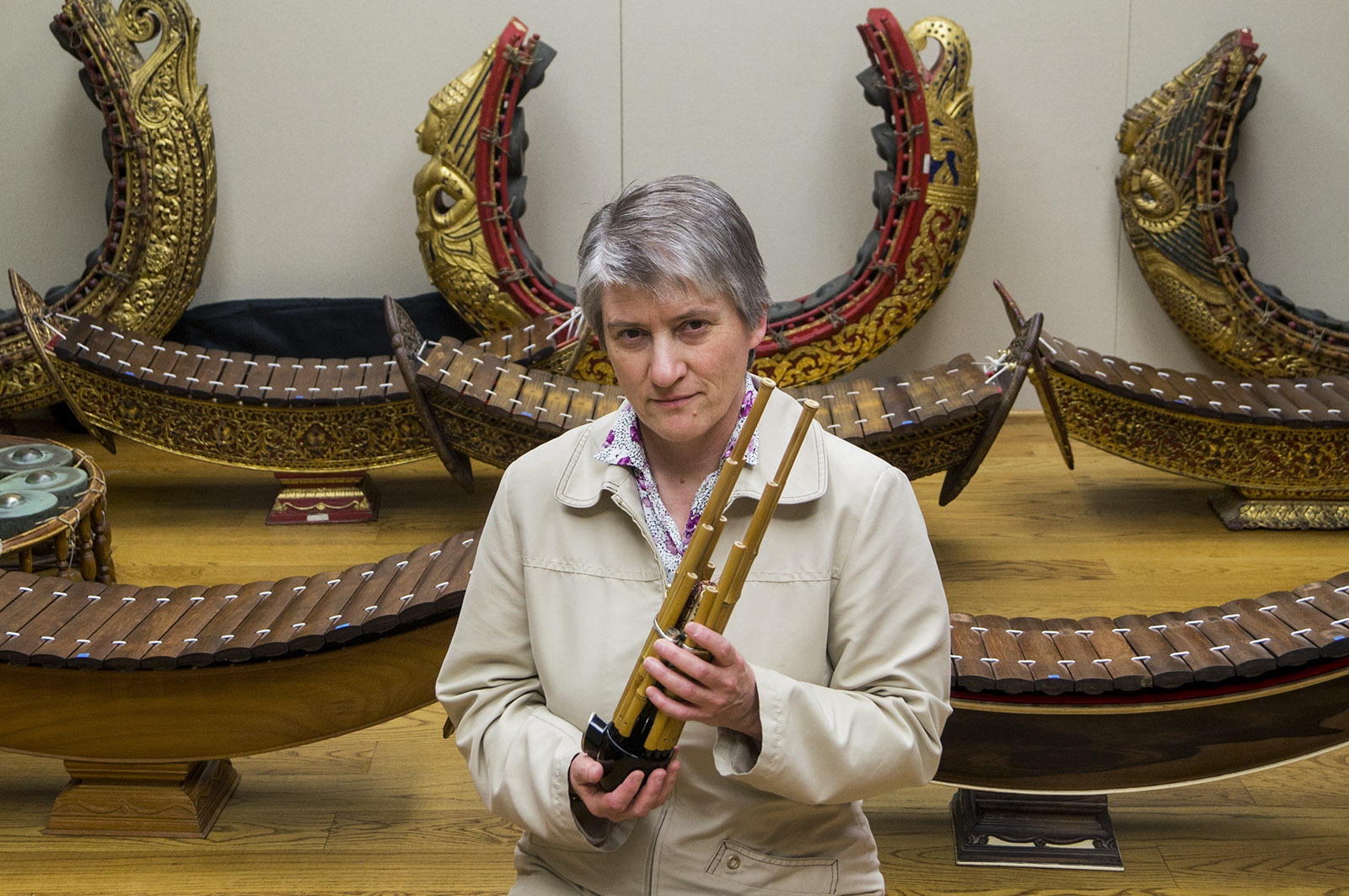Sounds of Schoenberg: The Japanese ensemble

Ethnomusicology professor Helen Rees holds a Japanese sho, a mouth organ instrument, from the ensemble of Japanese instruments purchased in 1958 by the late ethnomusicology professor Mantle Hood. (Julie Hanash/Daily Bruin)
By Nate Nickolai
April 22, 2016 12:42 a.m.
Dozens of instruments cluttered the floor of the cramped Schoenberg room, creating a carpet of wood, string and metal pieces.
In the back corner, an intricate and large Japanese drum loomed over the small instruments surrounding it. The drum’s colorful skin starkly contrasted with the blank brick of the wall behind it.
The drum, or taiko in Japanese, is one of the numerous instruments purchased by the late ethnomusicology professor Mantle Hood, who acquired foreign instruments for UCLA using a $39,000 Rockefeller Foundation grant in 1958.
The grant allowed the school to procure instruments from all over the world, starting with four sets of instruments, including flutes and drums from Japan, Thailand and Indonesia.
The new instruments allowed students to take a more hands-on approach to learning instruments from other cultures, said Helen Rees, an ethnomusicology professor. Since the implementation of foreign instruments in music classes in 1958, the school has gained around 800 new instruments from Asia, Africa, the Middle East, Eastern Europe, Latin America and North America.
With the arrival of new instruments, students could engage with traditional instruments in small ensemble groups at UCLA for the first time. As members of the music groups, students learned how to play traditional instruments like the Japanese sho, a mouth organ instrument.
The Japanese ensemble had a very distinct sound, Rees said, as each of its instruments’ notes were distinguishable despite being played at the same time.
“They were extremely good. Many of the people had been playing together for a long time, and they were taught by excellent teachers,” Rees said. “They understood the type of sound that a Japanese group would be aiming for.”
Although some instruments were created in the late 19th century, Rees said the instruments are all in reasonably good condition, with some being retuned every year. Since the Japanese instruments have not been part of an ensemble group since 2001, Rees said they are in better condition compared to North Indian instruments, such as the tabla, which are played every day.
Outside of the classroom, student ensembles like the Japanese ensemble played with musicians of different backgrounds. By partnering with local Japanese Buddhist temples and the Tenrikyo Church, the Japanese ensemble engaged directly with the gagaku genre of Japanese music played in courts and temples.
“It is a very slow, elegant form of music; everybody has to play their notes exactly at the right time,” Rees said. “It’s a very restrained sort of elegant genre.”


